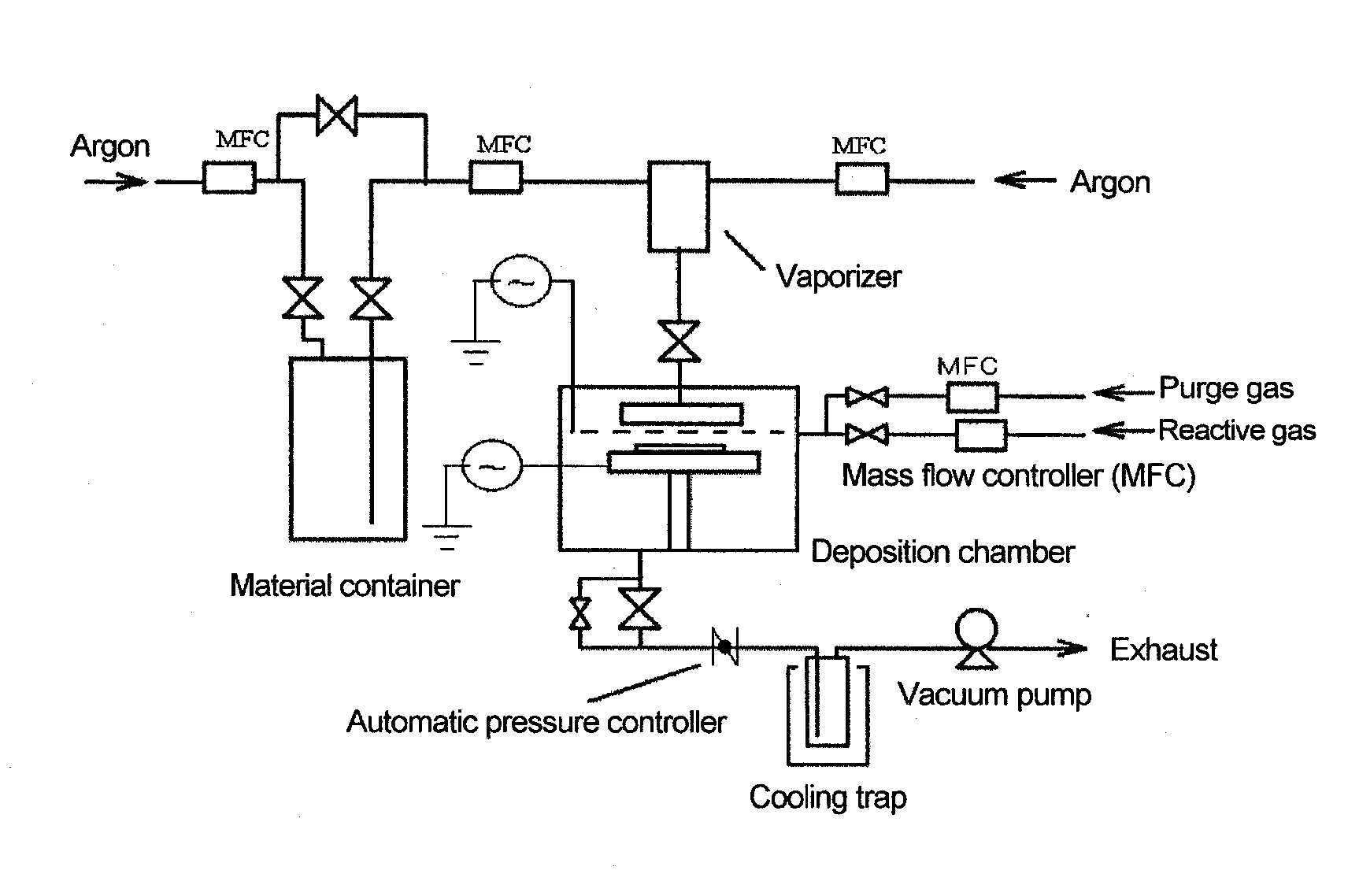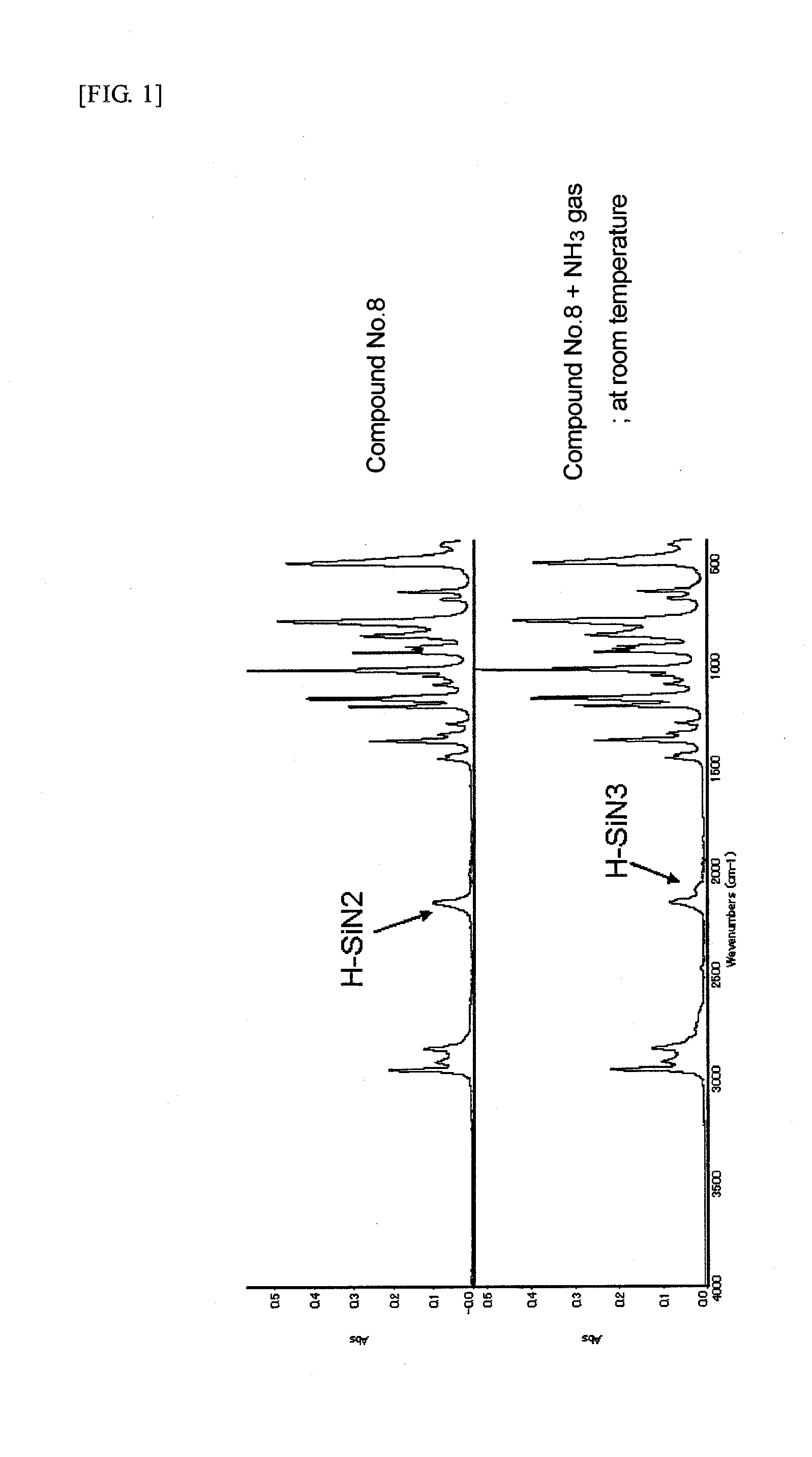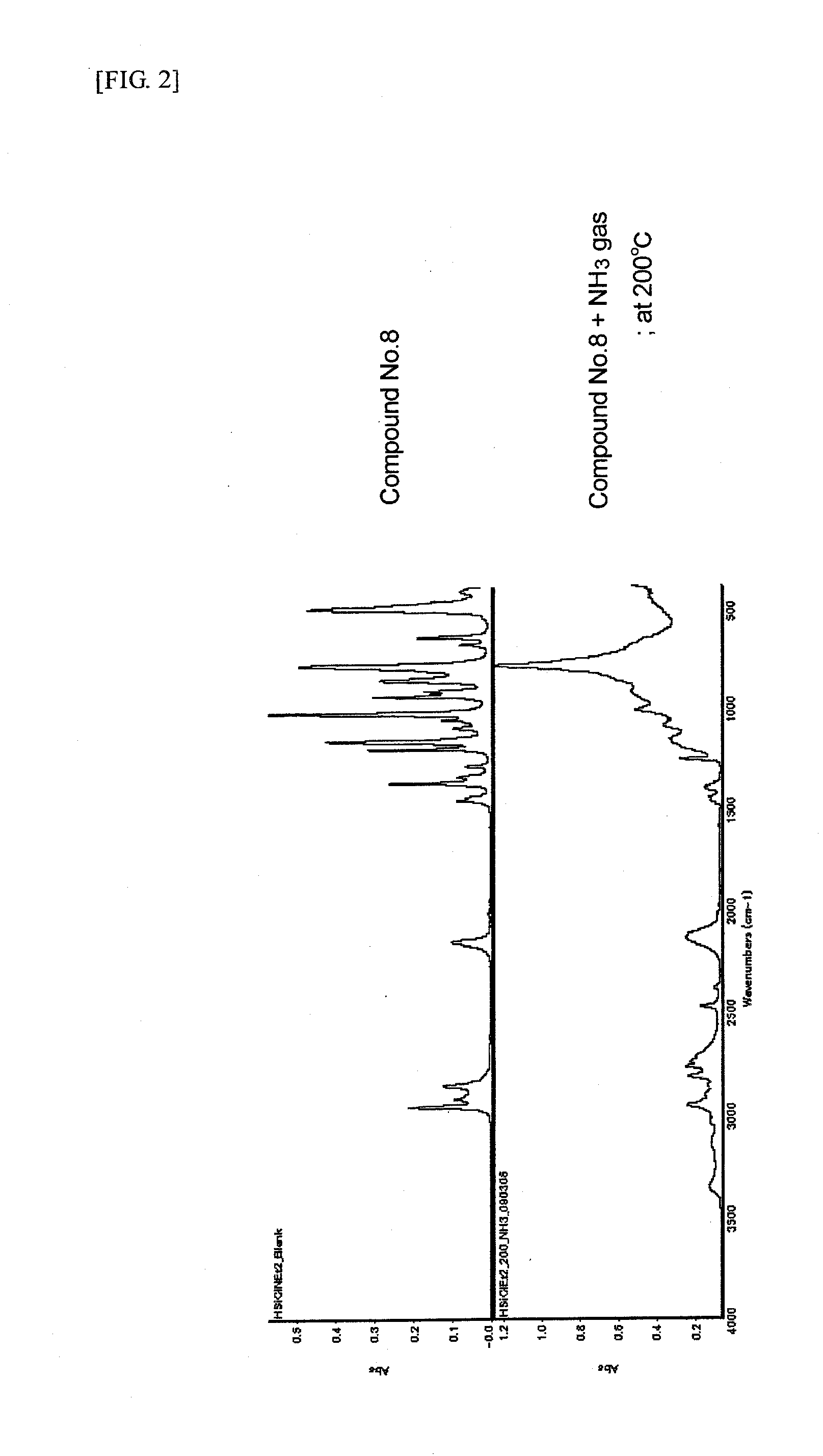Material for chemical vapor deposition and process for forming silicon-containing thin film using same
- Summary
- Abstract
- Description
- Claims
- Application Information
AI Technical Summary
Benefits of technology
Problems solved by technology
Method used
Image
Examples
example 1
Preparation of HSiCl(N(CH3)(C2H5))2 (Compound No. 14)
[0052]A reaction flask was charged with 41.0 g of HSiCl3 and 365 ml of methyl tert-butyl ether (hereinafter “MTBE”), and the mixture was cooled to −30° C. To the mixture was added 79.0 g of NH(CH3)(C2H5) in a dropwise manner such that the reaction system temperature might not exceed −20° C. After completion of the dropwise addition, the reaction mixture was stirred at room temperature for 3 hours, filtered under pressure, washed with 71 ml of MTBE. MTBE was removed by evaporation at 50° C. under reduced pressure, and the residue was distilled under reduced pressure. From the fraction at 1200 Pa and a distillation temperature of 53° C. was obtained HSiCl(N(CH3)(C2H5))2 as a desired product in a yield of 70%. The resulting compound was identified by 1H-NMR analysis.
[0053]1H-NMR (solvent: deuterated benzene) (chemical shift:multiplicity:proton ratio): (5.126:s:1) (2.773:quartet:4) (2.365:s:6) (0.916:t:6)
example 2
Preparation of HSiCl(N(C2H5)2)2 (Compound No. 8)
[0054]A reaction flask was charged with 75.0 g of HSiCl3 and 360 ml of THF, followed by cooling to 0° C. To the mixture was added a mixed solution of 165.33 g of NH(C2H5)2 and 70 ml of THF in a dropwise manner such that the reaction system temperature might not exceed 5° C. After completion of the dropwise addition, the reaction mixture was stirred at room temperature for 3 hours, heated at 45° C., and further stirred for 9 hours. The reaction mixture was filtered under pressure, washed with THF, and evaporated at 50° C. under reduced pressure to remove THF, and the residue was distilled under reduced pressure. From the fraction at 250 Pa and a distillation temperature of 44° C. was obtained HSiCl(N(C2H5)2)2 as a desired product in a yield of 62%. The resulting compound was identified by 1H-NMR analysis.
[0055]1H-NMR (solvent: deuterated benzene) (chemical shift:multiplicity:proton ratio): (5.121:s:1) (2.835:quartet:8) (0.942:t:12)
example 3
Preparation of HSiCl(HNC(CH3)3)2 (Compound No. 6)
[0056]A reaction flask was charged with 75.0 g of HSiCl3 and 190 ml of THF, followed by cooling to 0° C. To the mixture was added a mixed solution of 163.77 g of NH2(C(CH3)3) and 77 ml of THF in a dropwise manner such that the reaction system temperature might not exceed 5° C. After completion of the dropwise addition, the reaction mixture was stirred at room temperature for 3 hours, heated to 55° C., and further stirred for 4 hours. The reaction mixture was filtered under pressure, washed with THF, and evaporated at 50° C. under reduced pressure to remove THF, and the residue was distilled under reduced pressure. From the fraction at 1470 Pa and a distillation temperature of 74° C. was obtained HSiCl(HNC(CH3)3)2 as a desired product in a yield of 62%. The resulting compound was identified by 1H-NMR analysis.
[0057]1H-NMR (solvent: deuterated benzene) (chemical shift:multiplicity:proton ratio): (5.440:s:1) (1.100:s:20)
PUM
| Property | Measurement | Unit |
|---|---|---|
| Temperature | aaaaa | aaaaa |
| Angle | aaaaa | aaaaa |
Abstract
Description
Claims
Application Information
 Login to View More
Login to View More - R&D
- Intellectual Property
- Life Sciences
- Materials
- Tech Scout
- Unparalleled Data Quality
- Higher Quality Content
- 60% Fewer Hallucinations
Browse by: Latest US Patents, China's latest patents, Technical Efficacy Thesaurus, Application Domain, Technology Topic, Popular Technical Reports.
© 2025 PatSnap. All rights reserved.Legal|Privacy policy|Modern Slavery Act Transparency Statement|Sitemap|About US| Contact US: help@patsnap.com



